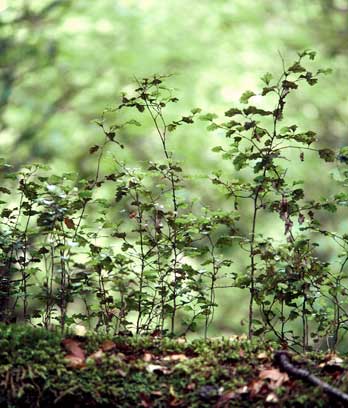Story summary
How forests start
After soil is cleared, it is soon covered with weeds. Later, shrubs appear, and then trees grow.
A similar process happens in New Zealand’s forests. One group of plants is replaced by another group over time. This is called plant succession.
Plants move in
Sometimes plants start growing on a surface that has no soil on it, such as ash from a volcanic eruption, or gravel left behind by a glacier. At other times, plants take over an area of soil that has been cleared of vegetation by fire, a landslide, or a storm.
From bare ground
Most plants can’t live on a surface without soil, because they need nitrogen from the soil. But some plants can take nitrogen from the air and change it into a form they can use. These ones – including brooms, tree tutu, kōwhai and gorse – appear early. Over time, their leaves and roots die and help to make soil. Then, larger plants can grow – often kāmahi and southern rātā trees. Later, big conifers grow up through this forest.
Pioneer plants
The first plants in a cleared area are called pioneer plants. They grow there because they are specially suited to the conditions.
- Bracken fern spread over large areas after Māori came to New Zealand and burnt a lot of forest.
- Mānuka is a tough plant that grows well after fire. If it is burnt, its seed capsules split open, and wind scatters its seeds.
- Gorse was brought to New Zealand by European settlers for hedges. It soon spread onto farmed land. Farmers dislike gorse because it takes over their land.
The next stages: a new forest
After bracken, mānuka or gorse take over an area, they grow into a thick cover. Underneath this, native plants get started. As the pioneer plants become older and die, native trees (often kāmahi) grow up through the gaps. Later, bigger trees grow up between these ones.





